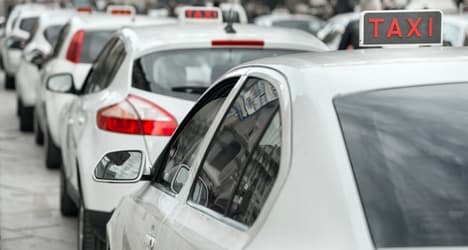Italian cabbies 'smuggled refugees to Germany'

A number of Italian taxi drivers have been arrested in Germany for allegedly running hundreds of refugees across the country's border, although one organization claims they have done nothing wrong.
Police started cracking down on the practice last year, although the news only came to light this week with the arrest of Italian Alessio Tavecchio in Germany.
The 45-year-old from Pianezze, north-east Italy, was caught with ten Syrians illegally travelling in his vehicle, Rai News said.
Hailing from the same area in Italy, 72-year-old Giancarlo Flaminio was also arrested alongside two men from nearby Padua. Marco Santi, 51, and 30-year-old Fabio Forin were caught with Flaminio allegedly helping 25 Syrians travel through Rosenheim in central Germany.
They are accused of using their cars and minibuses to accompany hundreds of migrants illegally crossing into Germany.
But Pierpaolo Campagnolo, president of a cooperative of taxi drivers in northern Italy (Cooperativa Tassisti Vicentini), said drivers were not responsible for checking the visa status of the clients.
“It’s not obligatory to know who we’re taking...When a client is presentable and pays there’s no law that obliges us to ask their identity,” he was quoted as saying.
News of the arrests comes just weeks after Italian border police discovered 21 people crammed into a delivery van crossing from Austria.
The group of Eritreans, Ethiopians, Somalis and Syrians were sent back to Austria, while four Hungarians were arrested and sent to a detention centre in Italy.
Comments
See Also
Police started cracking down on the practice last year, although the news only came to light this week with the arrest of Italian Alessio Tavecchio in Germany.
The 45-year-old from Pianezze, north-east Italy, was caught with ten Syrians illegally travelling in his vehicle, Rai News said.
Hailing from the same area in Italy, 72-year-old Giancarlo Flaminio was also arrested alongside two men from nearby Padua. Marco Santi, 51, and 30-year-old Fabio Forin were caught with Flaminio allegedly helping 25 Syrians travel through Rosenheim in central Germany.
They are accused of using their cars and minibuses to accompany hundreds of migrants illegally crossing into Germany.
But Pierpaolo Campagnolo, president of a cooperative of taxi drivers in northern Italy (Cooperativa Tassisti Vicentini), said drivers were not responsible for checking the visa status of the clients.
“It’s not obligatory to know who we’re taking...When a client is presentable and pays there’s no law that obliges us to ask their identity,” he was quoted as saying.
News of the arrests comes just weeks after Italian border police discovered 21 people crammed into a delivery van crossing from Austria.
The group of Eritreans, Ethiopians, Somalis and Syrians were sent back to Austria, while four Hungarians were arrested and sent to a detention centre in Italy.
Join the conversation in our comments section below. Share your own views and experience and if you have a question or suggestion for our journalists then email us at [email protected].
Please keep comments civil, constructive and on topic – and make sure to read our terms of use before getting involved.
Please log in here to leave a comment.